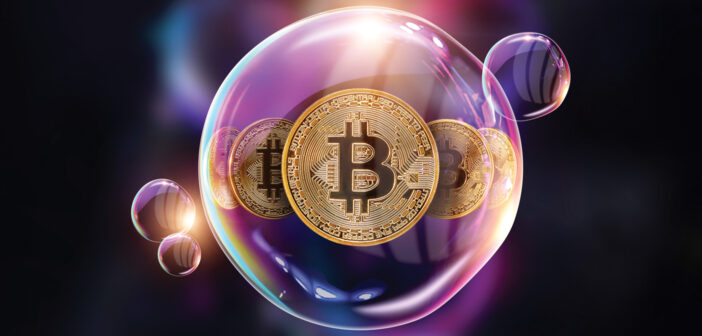Between March 2020 and January 2021, the price of a Bitcoin skyrocketed from $6,000 to $40,000. This leads to the question of whether Bitcoin is a “bubble” like the dot com stocks were in the late 1990s and the housing market was in the mid-2000s. It is hard to identify a bubble; just because an asset’s price sharply rises does not mean there is currently a bubble.
One way to identify a potential bubble is if people are buying the asset based on the expectation of future price appreciation and flipping it for a quick profit rather than holding it long-term. “House-flipping” prior to the Great Recession is an example of this. House prices were sharply rising, so investors would take out a mortgage with a minimum downpayment to buy a house with the goal of quickly selling at a higher price and pocketing the difference. “Tulipmania” in 17th century Netherlands is another example, where similar speculation drove a single tulip bulb’s price to one equivalent to a worker’s annual salary before quickly crashing. If similar speculation is occurring with Bitcoin, then that would lend evidence to there being a bubble.
Hyman Minsky, an economics professor at Washington University in St. Louis, MO studied asset price bubbles. Minsky’s theories became widely known during the housing price bubble and crash, since they accurately explained what was occurring in the market. He proposed five stages of a bubble. The first is the introduction of a new technology or paradigm. With housing, it was mortgage-backed securities and related financial engineering. Bitcoin, itself, represented new technology when it was introduced in 2009. The second stage is a boom, when new investors enter the market and begin buying the asset. For housing, this might coincide with the rise in housing prices experienced from 1998 to 2003. The price of Bitcoin rose from about $450 in early 2016 to $2,000 in mid-2017. The third stage is euphoria, when the asset’s price skyrockets, caution is thrown to the wind and people (euphorically) buy the asset with the expectation of its price permanently rising. The housing market’s euphoria coincided with housing prices accelerating from 2003 to 2006. Bitcoin experienced a euphoria when its price increased from $2,000 in mid-2017 to $17,000 by December 2017.
The fourth bubble stage is profit-taking, when people start selling the asset to cash-out their profit. This leads to a so-called “Minsky Moment” or “bust,” which is the fifth stage. This is when the asset price stops rising, causing sellers to have a hard time finding buyers. The euphoria is over, panic ensues and the asset’s price collapses. Housing’s “Minsky Moment” came in February 2007, while Bitcoin had one in December 2017, when its price collapsed to $4,000 by the summer.
Arguably, Bitcoin is in a second euphoria phase, judging by its skyrocketing price and hype on social media. It remains to be seen whether there will be a second Minsky Moment, or if this time is different.














